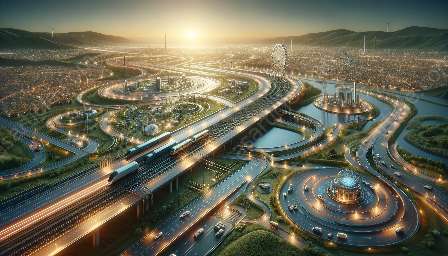Public transport systems play a crucial role in ensuring sustainable and efficient transportation for urban populations. With the increasing need for seamless connectivity, multimodal public transport systems have emerged as a comprehensive and integrated solution to address the challenges of urban mobility. This article explores the concept of multimodal public transport systems, their compatibility with multimodal transport systems, and the implications for transport engineering.
The Era of Multimodal Public Transport Systems
Multimodal public transport systems represent a paradigm shift in the way we conceptualize urban transportation. Traditionally, public transport systems have been characterized by segregated modes of transport, such as buses, trains, and trams, operating independently of each other. However, the concept of multimodal public transport seeks to integrate various modes of transport into a seamless and interconnected network.
This approach enables passengers to transition between different modes of transport with ease, reducing the reliance on private vehicles and promoting sustainable travel practices. By incorporating multiple modes of transport, such as buses, trams, subways, and shared mobility services, multimodal public transport systems offer greater flexibility and accessibility to commuters.
Benefits of Multimodal Public Transport Systems
The adoption of multimodal public transport systems brings forth a myriad of benefits for urban communities. Firstly, it enhances the overall efficiency of the transport network by optimizing the use of different modes of transport based on specific travel requirements. This not only reduces congestion but also improves the overall travel experience for passengers.
Furthermore, multimodal public transport systems contribute to environmental sustainability by promoting the use of greener modes of transport, such as electric buses and trams. By reducing the carbon footprint associated with urban transportation, these systems play a vital role in mitigating air pollution and addressing climate change concerns.
From a socio-economic perspective, multimodal public transport systems foster greater social inclusion by providing accessible and affordable transportation options for diverse segments of the population. This inclusivity helps bridge the gap in mobility disparities and ensures equitable access to essential services and employment opportunities.
Compatibility with Multimodal Transport Systems
When considering the compatibility of multimodal public transport systems with broader multimodal transport systems, it is essential to recognize the interconnected nature of urban mobility. Multimodal transport systems encompass a wide range of transport options, including public transport, cycling, walking, and shared mobility solutions.
By integrating with multimodal transport systems, multimodal public transport solutions contribute to the creation of a holistic urban mobility framework. This integration allows for seamless interconnectivity between different modes of transport, providing passengers with a comprehensive and interconnected travel experience. The interoperability between various transport modes within a multimodal system enhances the overall efficiency and accessibility of urban transportation networks.
Moreover, the integration of multimodal public transport systems with broader multimodal transport systems facilitates intermodal connectivity, allowing passengers to transition between different transport modes effortlessly. This seamless transition enables a more streamlined and convenient travel experience, reducing the barriers associated with modal shifts and transfers.
Implications for Transport Engineering
The development and implementation of multimodal public transport systems have significant implications for the field of transport engineering. Transport engineers play a pivotal role in designing, optimizing, and managing the infrastructure and systems that underpin multimodal public transport networks.
From a design perspective, transport engineers are tasked with creating infrastructure that supports the seamless integration of diverse transport modes. This involves the planning and development of intermodal transfer hubs, dedicated lanes for buses and cyclists, and the optimization of infrastructure to accommodate emerging transport technologies.
Furthermore, transport engineers are at the forefront of adopting innovative technologies and data-driven solutions to enhance the operational efficiency of multimodal public transport systems. This includes the integration of intelligent transportation systems, real-time passenger information systems, and predictive analytics to optimize service reliability and passenger experience.
As cities continue to embrace the concept of multimodal public transport, transport engineers are also faced with the challenge of sustainability and resilience. The design and implementation of environmentally friendly infrastructure, such as electric charging stations and sustainable urban mobility solutions, are integral to the long-term viability of multimodal public transport networks.
Conclusion
Multimodal public transport systems represent a fundamental shift in the way we approach urban mobility, offering a holistic and interconnected solution to address the evolving transportation needs of urban populations. As these systems continue to evolve and expand, their compatibility with broader multimodal transport systems and the role of transport engineering will play a crucial role in shaping the future of sustainable urban transportation.
By embracing the principles of integration, sustainability, and inclusivity, multimodal public transport systems stand at the forefront of revolutionizing urban transportation, ultimately paving the way for more resilient, efficient, and accessible cities.

